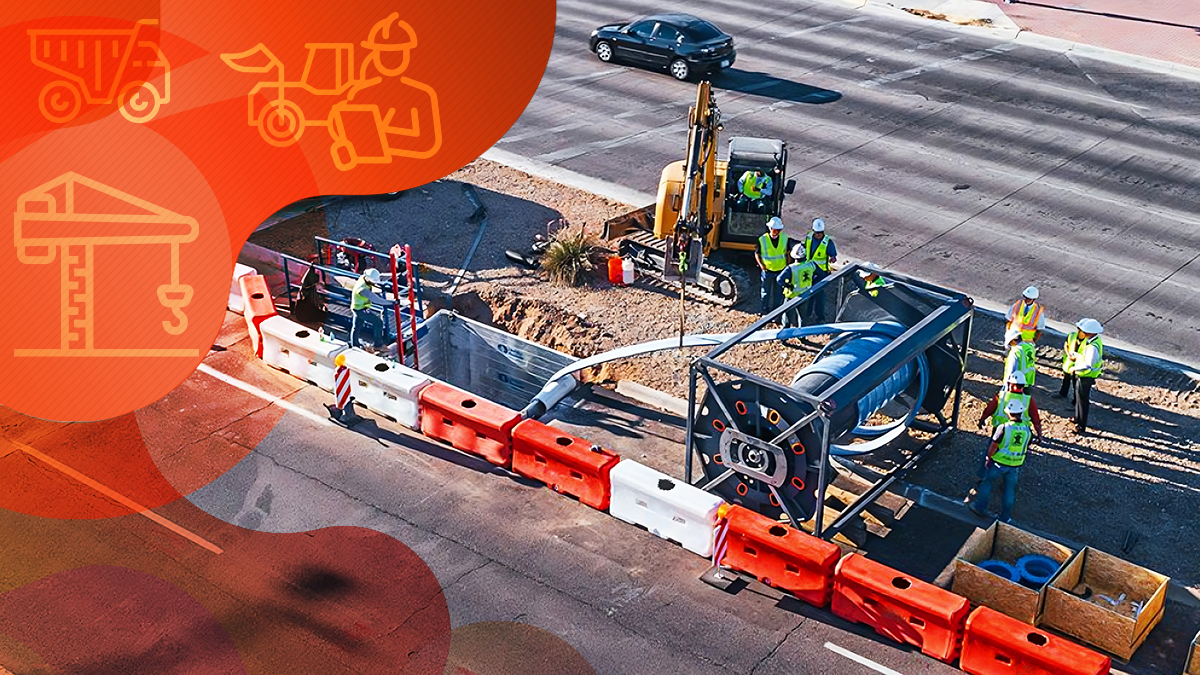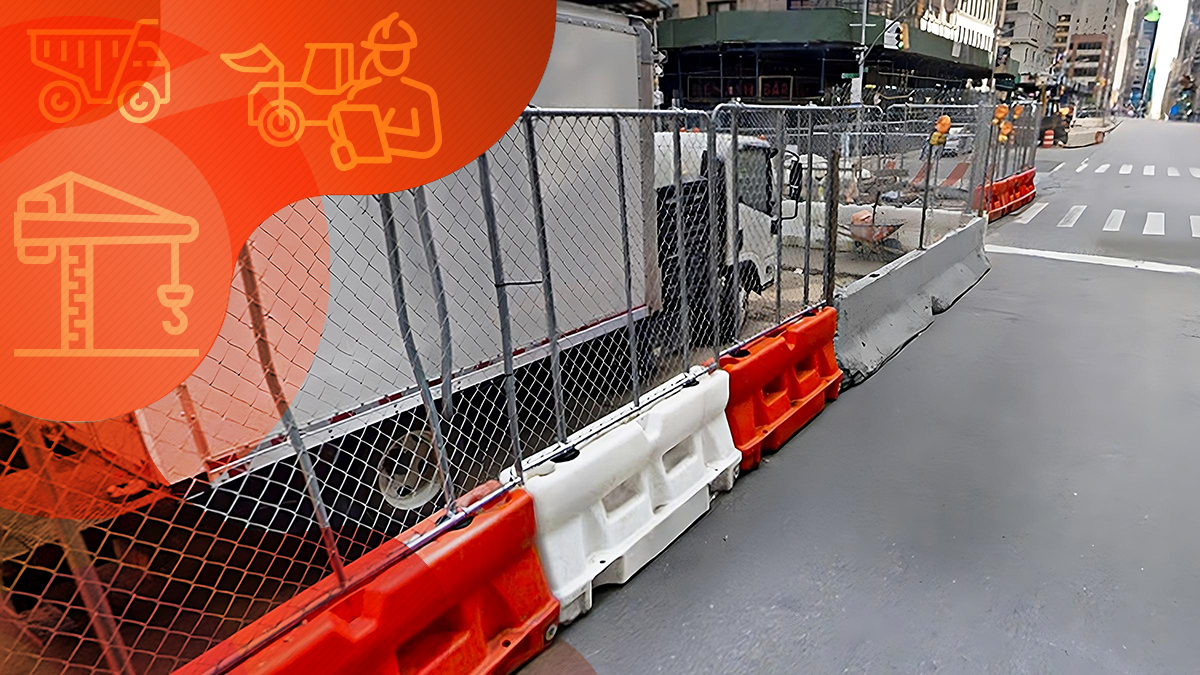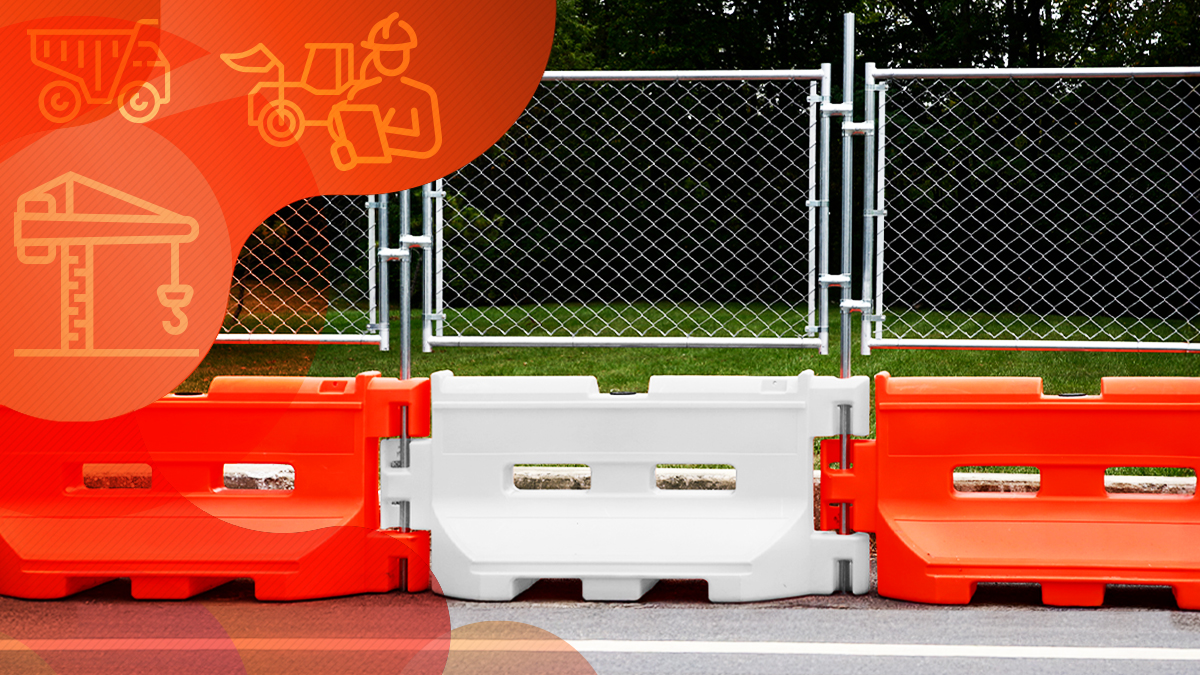What Is a Post-Driven Fence and When to Use It
Curious about post-driven fences? Learn when and why to choose this semi-permanent solution for your construction projects.

Adequately securing your perimeter when it comes to your most important construction projects is always necessary, and Temporary Fencing is the go-to solution with good reason. Temp Fences are strong and makes it clear to passersby where the boundary of your perimeter is.
But how do you go about choosing the right fencing for your needs? What do you do in situations where traditional temporary fencing isn’t secure enough, but permanent fencing just doesn’t make sense? A semi-permanent fencing option like a post-driven fence presents a desirable compromise between the two.
What Is a Post-Driven Fence?
Post-driven fences are semi-permanent barriers consisting of vertical posts inserted directly into the ground. Once the posts are in place, the fencing material —such as chain-link mesh— is attached to the posts using fasteners, clamps, or other hardware.
As each drive-in fence post extends at least a couple of feet into the ground, this type of fencing is extremely sturdy and won’t be easy to move once installed.
Post-driven fencing is an ideal fit for construction or job sites that fit the following criteria:
- Require a high level of security.
- Will remain in progress for an extended period.
- Will benefit from well-established boundaries.
How deep fence a post should go?
Although the actual depths of the post will vary from site to site or product to product, most post-driven fencing extends about two feet into the ground.
This is deep enough to keep it sturdy and reliable, but not so deep it’s impossible to move or uninstall when needed or desired. In regions where deep winter frost is a potential issue, posts can be driven up to four feet deep instead.
Distance between chain-link fence posts
The distance between driven posts will vary -- depending on the product and situation. However, the average distance is usually about ten feet.


Should the post be set with concrete?
Although it’s possible to set drive-in fence posts with concrete, it’s not recommended. Concrete can cause the posts to rust and lose their integrity. It also complicates the process of eventually uninstalling the fence.
Generally, the driven posts alone provide enough strength and security, so setting fence posts without concrete is preferable.
Why Choose Semi-Permanent Fencing Over the Alternatives?
Semi-permanent fence options, like post-driven fences, bring a wide range of benefits to the table that the alternatives don’t. Let’s go over a few of the most noteworthy.
It’s cost-effective
In comparison to other options like permanent fencing or temporary fence panels, post-driven fencing is incredibly economical. It keeps people safe and protects the perimeter of even high-security projects. But it won’t blow your project budget out of the water in the process, making it a solid security investment.
It’s durable
Semi-permanent fencing solutions like post-driven fences are typically rated for compliance with industry standards, wind resistance, and ability to bear horizontal loads, among other factors. You know right from the start what the fencing you’re investing in can be expected to do.
It’s versatile
Post-driven fencing doesn’t occupy as large a footprint as other options. This makes it ideal for terrain and job sites where the security fencing needs to fit into tight or limited spaces. However, it doesn’t sacrifice anything when it comes to strength.
Comparison Between Temp Fence Panels and Driven Fences
When it comes to secure semi-permanent fencing options, post-driven fences are one common option. Temporary panel fences are another. Both types of fencing have their benefits and ideal use situations. Here’s a rundown of how they stack up against one another as options.
Structure
In contrast to the post-driven fencing, temporary fence panels consist of multiple separate interlocking panels that free-stand on top of the ground.
No portion of the fence is underneath the ground at any point in its installation. Instead, it’s necessary to secure the panels by placing weights on top of the stands.
Pre-assembled and quick to deploy, temporary panels are versatile. However, if not adequately weighted, they can topple in strong winds.
Post-driven fences are anchored firmly into the ground, making them exceptionally stable and resistant to high winds.


Length of project
You can technically use either type of fencing to secure your job site perimeters, but post-driven fences are more suitable for long-term applications.
If your project has a fixed perimeter and will last over a year, post-driven fences are a great option. They are generally cheaper than temporary fence panels because they do not come pre-assembled. However, they require more effort to install and uninstall, making them harder to reuse once removed.
Temporary fences are versatile, suitable for both short-term and long-term use. When properly cared for, temporary fence panels can last well over five years. Although they might be more expensive upfront, their durability means you can potentially reuse them for future projects.
Maintenance
Once a post-driven fence is in place, you don’t have to do much to maintain it. All perimeter fencing should be periodically inspected for problems, but those associated with post-driven options tend to be minor and easy to fix.
Panel fencing, on the other hand, may require at least some maintenance. For example, you’ll need to check to make sure your weights haven’t shifted out of place and that all of your panels remain locked together as intended.
Level Up When It Comes to Your Job Site Fencing
In long-term construction situations, permanent fencing is typically overkill but temporary alternatives aren’t always sufficient. Semi-permanent options like post-driven fences occupy a perfect middle ground, making it everything you need and nothing you don’t.
Ready to take the next step toward putting post-driven fences to work for you? Compare even more details between the fence types and learn what works best for you in our FREE guide!


Trend now

Reducing Impact Damage with Water-Filled Plastic Jersey Barriers
Understanding the effects of barrier materials on vehicles and their occupants can help improve road safety.

Choosing Between Concrete or Plastic Jersey Barriers
Not all barriers are built the same. Here’s what to know before choosing between plastic and concrete.

Advantages of Water Barriers with Fence Toppers
Learn how a fence topper transforms water barriers into a more secure, private, and effective work site solution.

